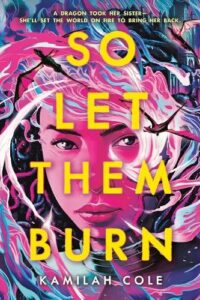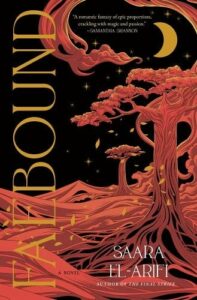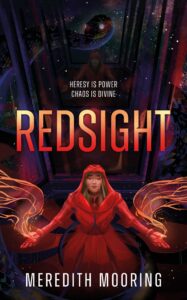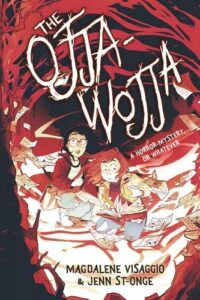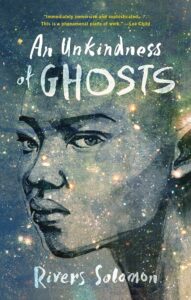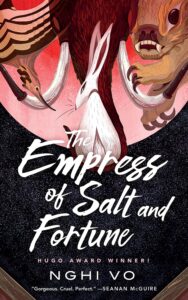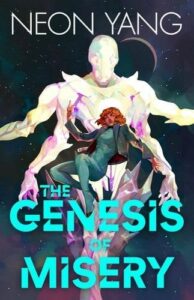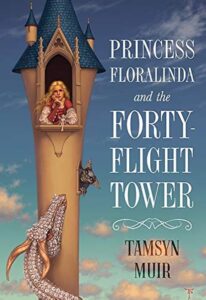Buy this from Bookshop.org to support local bookstores and the Lesbrary!
I first saw Kamilah Cole describe her debut, So Let Them Burn, as a Jamaican Joan of Arc, which was enough to grab my attention even before the book had a cover. To be more specific, So Let Them Burn is the first book in a YA fantasy series that follows former chosen one Faron Vincent and her older sister, Elara. Five years after the war for their island’s independence, Elara inadvertently forms a bond with an enemy dragon, while Faron determines she will stop at absolutely nothing to save her sister from the threat of both the bond and the empire itself.
Like I said, I was sold on the concept the minute I heard about it, but even the coolest concept can turn out to be a let down in the wrong hands. Kamilah Cole is not the wrong hands. It took less than half a page for me to determine that I was going to love this book, and as the story unfolded, I only got more invested. Every time I had to put the book down, I was just a little bit resentful that I couldn’t keep reading.
Something that I thought was really fun is that while I knew this book follows a chosen one after she’s done her duty, Faron is not the only one who fits into a popular fantasy archetype. One dynamic I found particularly fascinating is the one between chosen one Faron and Queen Aveline, who spent the first seventeen years of her life on a farm with no knowledge of her true identity and now resents Faron a little bit for the fact that when the war ended, Faron got to go home and Aveline didn’t.
Literally all of the relationships were wonderful, though. The romantic relationships had me hooked, as did the friendships, but the central relationship between the two sisters just felt so real. They both loved and admired each other so much that, despite the hints of jealousy on each side and the expected annoyances, they were both so determined to keep each other safe, whatever the cost. I loved them both, and I am terrified for what the next book will bring for them.
I also really enjoyed the narrative voice, which was the first thing to win me over. It made me laugh throughout, though it never detracted from the more serious themes. Since this was third-person, I’m much less inclined to be annoying about how distinct the perspectives did or did not feel from each other, but there was at least enough difference that I never forgot which sister’s head I was in, even when they were in a scene together, so I’m quite satisfied on that front.
I already know I’m going to miss these characters when the series is done, but fortunately I’ve got some time until then. (Less fortunately, it also means I have to somehow survive that cliffhanger until then.) Even more fortunately, this series is not the only thing I have to look forward to from Kamilah Cole. Not every book that sounds amazing ends up living up to my expectations, but this one definitely exceeded them. I recommend it with my whole heart.

